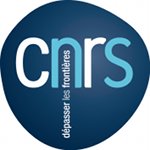Getaltheorie in het
Vlakke land
Arithmétique en plat pays
APP 2012
Lundi 21 mai 2012
Journée printanière
à
Gand.

Lieu : Département de mathématiques
Programme
Arithmétique en plat pays
APP 2012
Lundi 21 mai 2012
Journée printanière
à
Gand.

Lieu : Département de mathématiques
Programme
Programme

There are many explicit asymptotic evaluations concerning of the number π(x) of primes up to x but much less concerning the summatory function of the Moebius function. Both problems are known to be equivalent, but a strong quantitative form of this equivalence is missing. We will present some recent work in this direction, as well as some consequences regarding
In this talk we consider the problem of counting the number of rational points of bounded height on certain intersections of two quadrics in five variables. These are del Pezzo surfaces of degree four, and we focus on the case where the surface has a conic bundle structure.
Hilbert's tenth problem asked if there exists an algorithm that, given a polynomial over the integers in any number of variables, decides whether this polynomial has an integer solution. In 1970, Matiyasevich proved, following earlier work of Davis, Putnam and Robinson, that recursively enumerable subsets are diophantine for the integers. From this DPRM-theorem follows the negative answer to Hilbert's tenth problem, namely that diophantine equations over the integers are undecidable. Undecidability of diophantine equations has been proved for various other rings and fields. On the other hand, much less is known about generalizations of the stronger DPRM-theorem. In this talk, I will first give an overview of some known results. Then I will turn my attention to recursive, algebraic extensions L of the rationals, with some extra conditions that I will explain about. To finish, I will present a new result, namely that subsets of the polynomial ring L[X] that are recursively enumerable for every recursive presentation are diophantine. This is joint work with Jeroen Demeyer (University of Ghent). 
I will present some results on the behaviour of Neron component groups of abelian varieties under ramified base change, with special emphasis on wildly ramified abelian varieties. The main idea is that Neron models behave well under base change if the extension is "sufficiently orthogonal" to the minimal extension where the abelian variety acquires semi-abelian reduction, but it is a considerable challenge to define this orthogonality property in a suitable way. I will explain what it means for Jacobians and abelian varieties with potential multiplicative reduction. The hardest case is that of potential good reduction; I will discuss some open problems and possible approaches in that setting. This is a joint project with Lars Halvard Halle (Oslo). |



